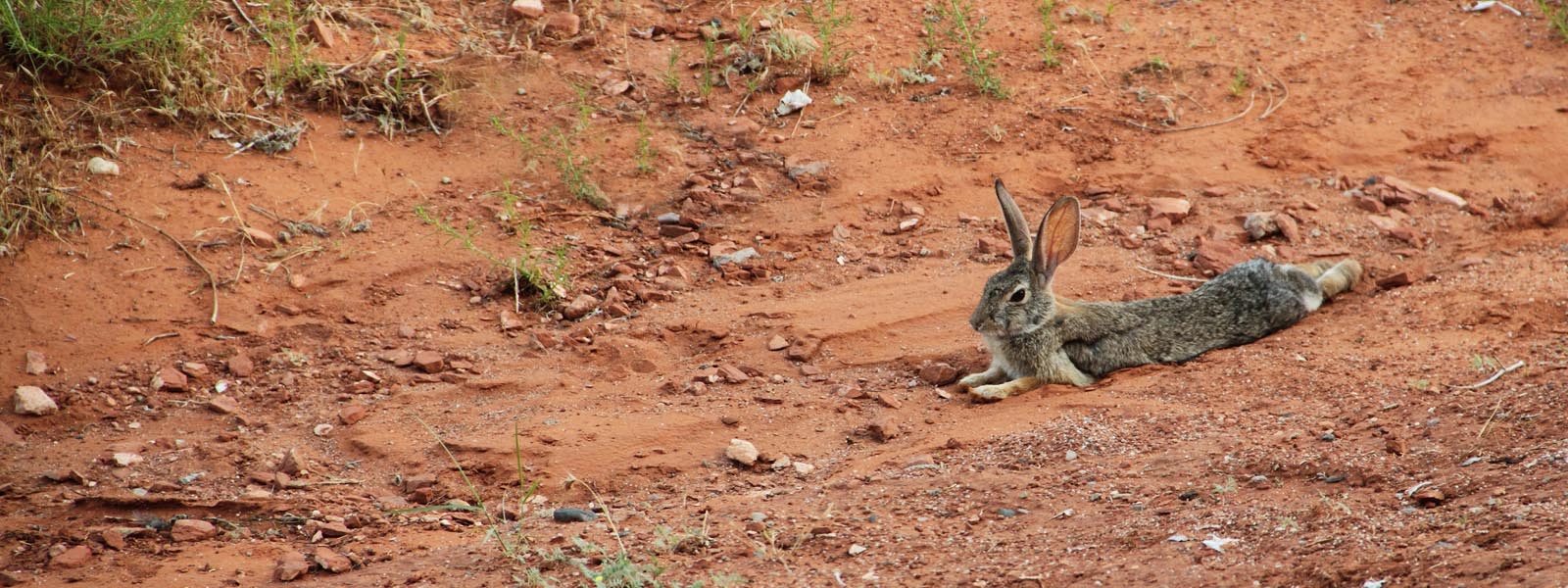Rabbits

Oryctolagus cuniculus
Rabbit is a restricted invasive animal under the Biosecurity Act 2014. It must not be kept, moved, fed, given away, sold or released into the environment without a permit. Pet rabbits can be surrendered to the RSPCA which is permitted to re-home illegally kept rabbits interstate.
Rabbits cause severe environmental damage by feeding on native vegetation and preventing it from regenerating. They compete with native animals for food and space and degrade water through overgrazing. Rabbits also reduce the quantity and quality of pasture for grazing animals, and are a primary cause of soil erosion.
Rabbits can breed from 4 months of age with females capable of five to six litters in a good breeding season with an average of three to four kittens per litter.
Hares are sometimes confused with rabbits but are considerably larger, have longer ears with black tips, larger hind legs and tend to live alone except when breeding, unlike rabbits which live in groups.
An integrated approach to controlling rabbits is the most effective land management strategy. Methods include destroying rabbit warrens, rabbit proof fencing, trapping, baiting, shooting, fumigation, habitat modification and by the use of biological controls such as rabbit hemorrhagic disease virus (also known as rabbit calicivirus disease).
Landholders can purchase commercially manufactured bait products from suppliers of agricultural products to control rabbit numbers. Rabbit populations tend to increase over winter and during extended dry periods.
Once rain falls during spring and summer an increase in biting insect activity helps with the spread of biological agents that have been released for control of rabbits.
If no decrease in rabbit numbers is observed following spring rains Council may make further releases of biological controls such as rabbit hemorrhagic disease virus.
